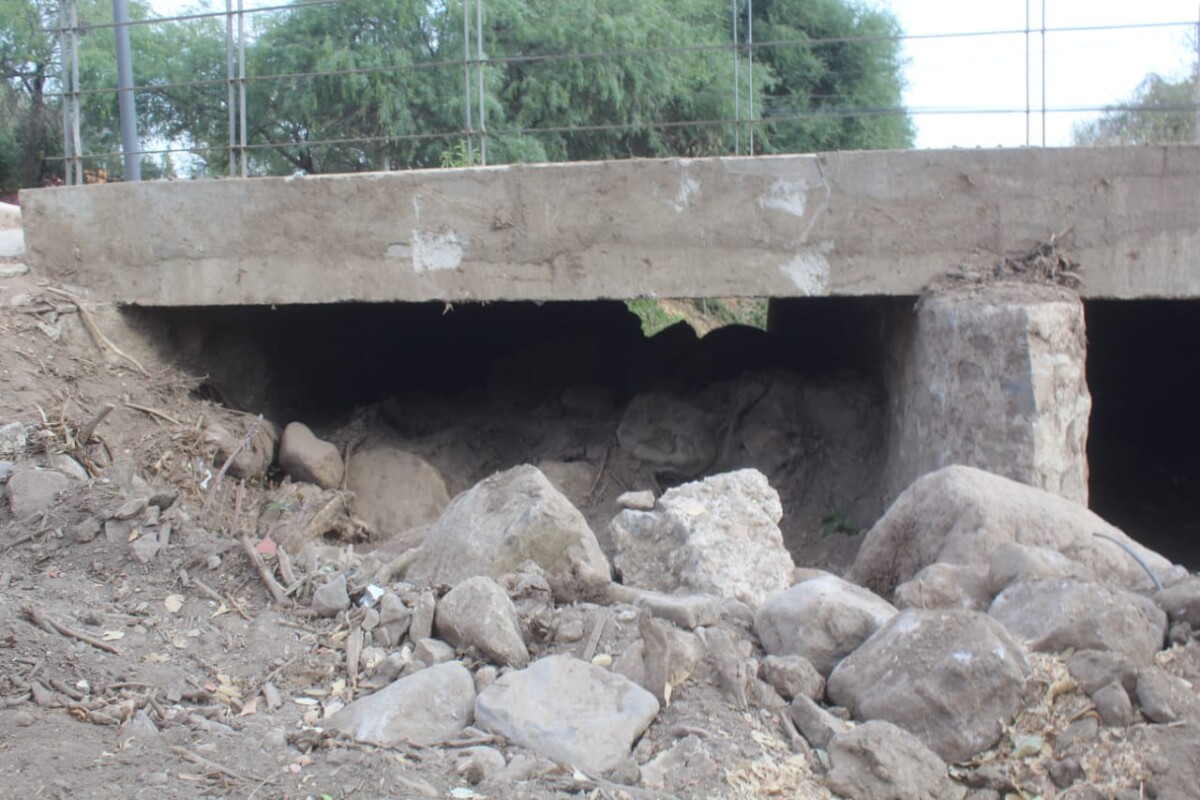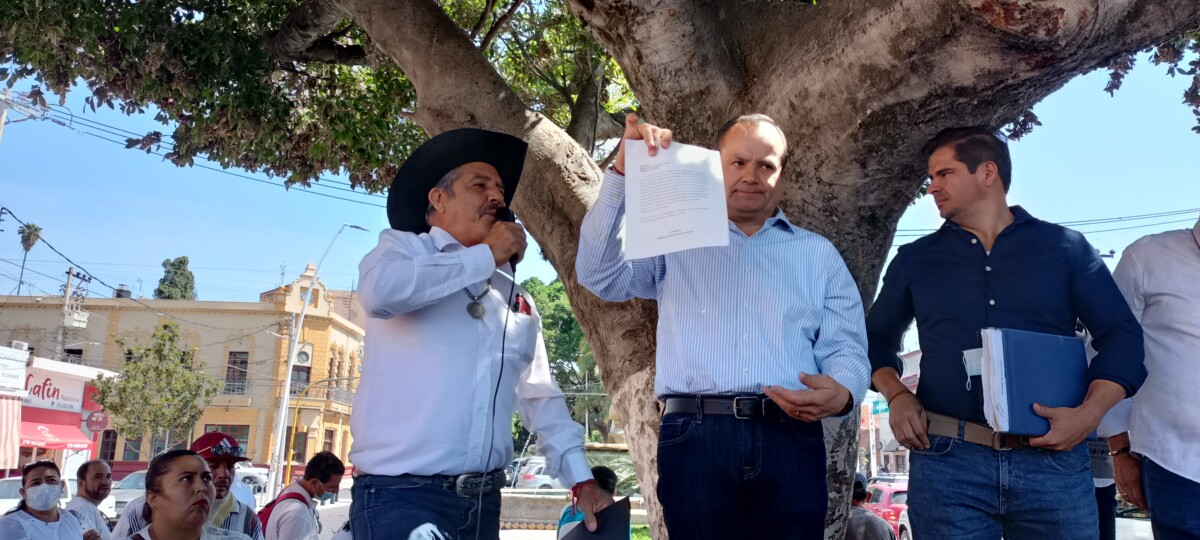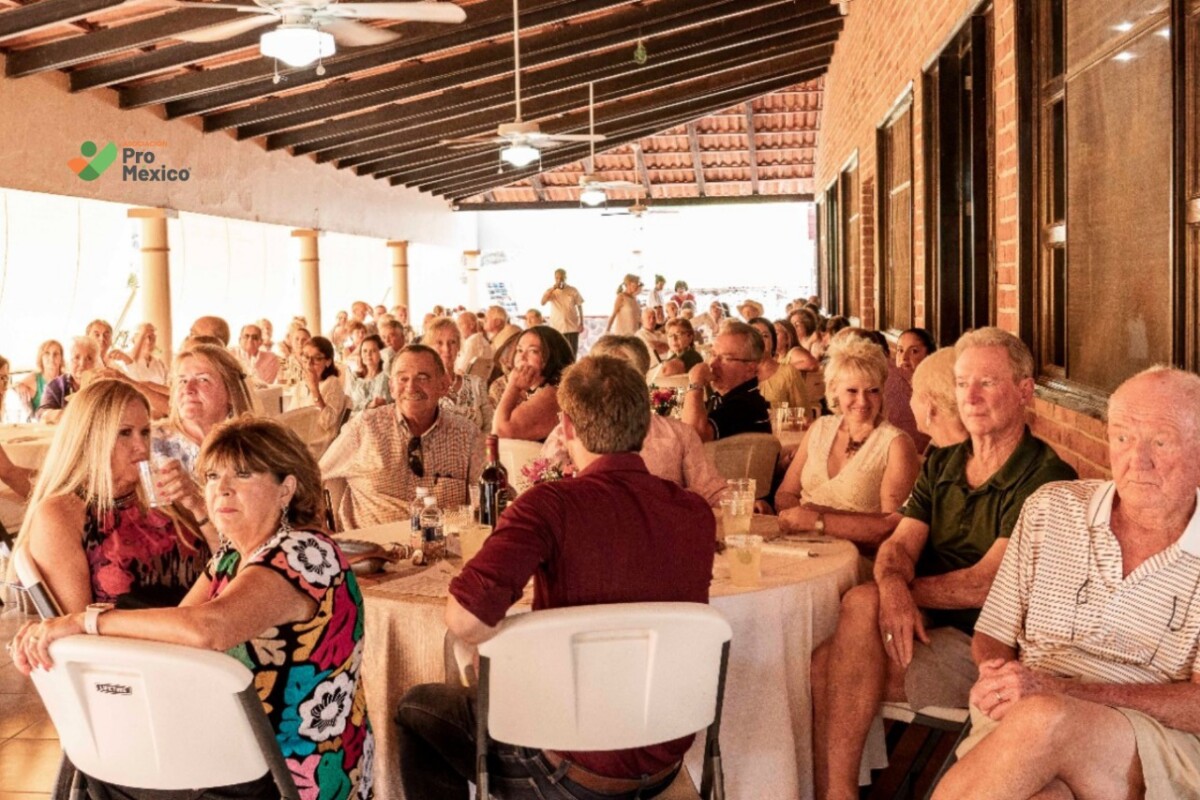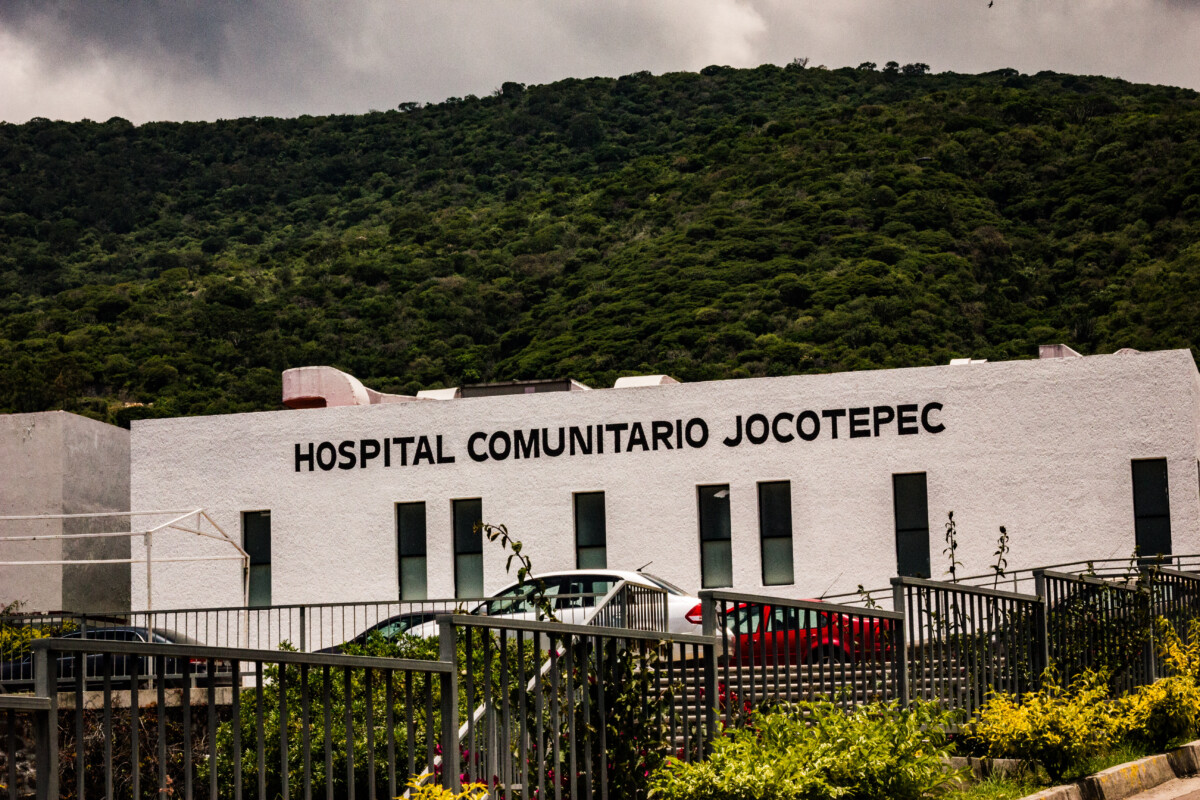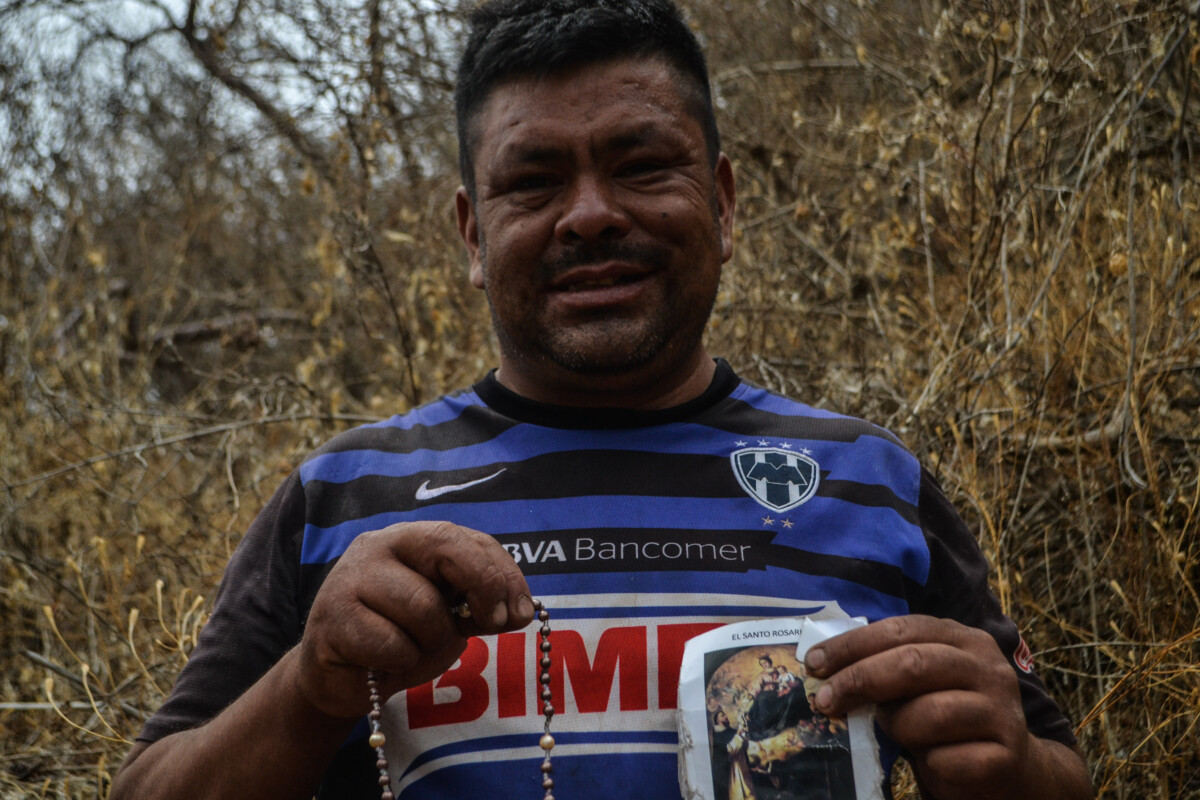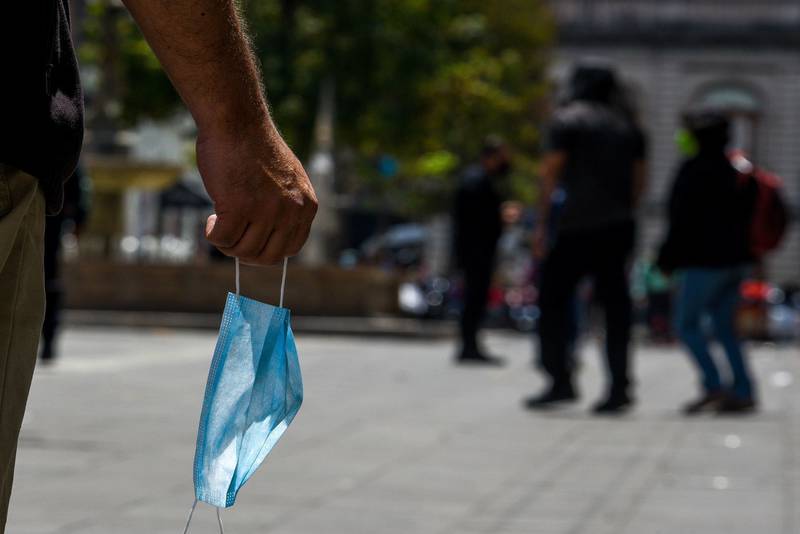gente
Streams will be cleared before the rainy season
La Cristina bridge still obstructed by large rocks. Photo: Sofía Medeles.
Sofía Medeles (Ajijic).- The streams that until a few months ago were clogged are now in the process of being cleared, so they will be clean before the rainy season, said Maximiano Macías Arceo. the acting delegate of Ajijic.
He added that work is underway and advancing as fast as possible in the streams of the western zone of Ajijic. These are the most obstructed streams, due to the mudslides that occurred in October of last year.
«Our goal, and the order of president Alejandro Aguirre Curiel, is to finish the works before the rains arrive. Both Civil Protection and the municipal government agree that Ajijic is a priority, due to the condition of the streams. However, city personnel are also focused on streams throughout the municipality,» he said.

The same La Cristina bridge on the side has already been cleaned. Photo: Sofia Medeles
He commented that in the days that they have been cleaning the first stream in La Cristina, they aren’t dealing much with garbage, but rather with the debris from the mudslides that occurred in October, mainly large stones.
«We are close to finishing and cleaning up,» he added. These works are being carried out by hand because the heavy machinery that they use to clean the riverbeds and bridges cannot reach the clogged areas.
When the cleaning of the first bridge is finished, Macías Arceo shared that they will clean eight more riverbeds and their bridges, from east to west, during the next few weeks.
Macías Arceo added that he would take advantage of the suitable stones excavated during the cleanup to use them for the paving and patching works in the streets of Ajijic.
Translated by Sandy Britton
Chapala City Council approves seven of ten union requests
In the center and with paper in hand, the municipal president of Chapala, Alejandro de Jesús Aguirre Curiel; (left) secretary general of the SPTAC union, Juan Cuevas Gudiño, and municipal trustee Gamaliel de Jesús Soto Pérez. Photo: Jazmín Stengel.
The municipal president of Chapala, Alejandro de Jesús Aguirre Curiel, gave the go-ahead to seven of the ten requests made by the Plural Union of Workers of the Chapala City Hall (SPTAC), in favor of the rights of the union civil servants.
The remaining three requests will be submitted to the municipal council for approval, according to the secretary-general of the union, Juan Cuevas Gudiño.
The list of requests included the approval of medical services for the worker’s dependent parents, minor children and students with a valid school card.
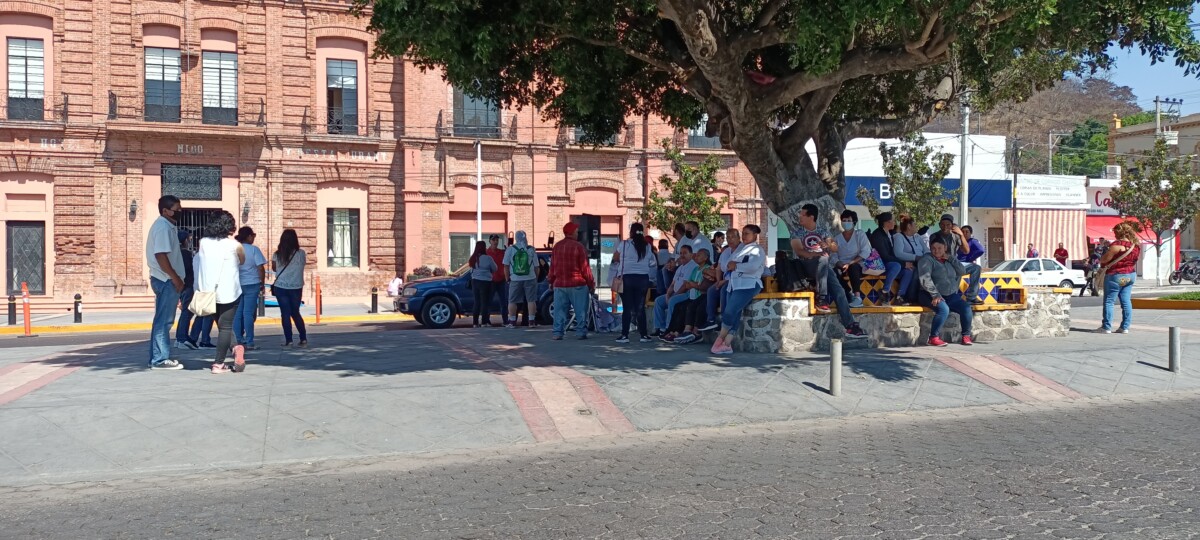
Members of the union outside the City Hall. Photo: Jazmín Stengel.
In addition, there will be an extra doctor and medical supplies at the Municipal Clinic so union members do not have to seek private consultation due to lack of attention or supplies.
In addition to the medical health requests presented by SPTAC, there is also the payment of overdue medical bills in an expeditious manner with the prior approval of the director of the Municipal Clinic.
Another issue is the vacation bonus corresponding to five legal days of salary. In order to collect the arrears, a review of documents will be carried out, stated Cuevas Gudiño.
it was also requested that the workers’ vacations be respected since there have been cases in which the directors have not allowed workers to take an absence from work, and that these vacations be made up if they are not given correctly.
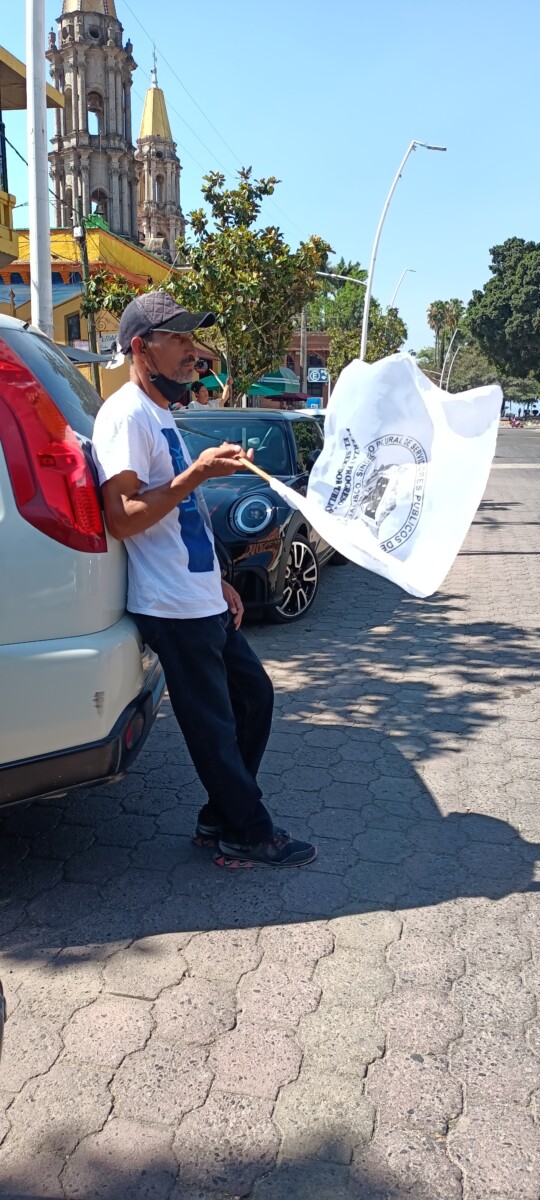
More than 300 people participated with flags and white T-shirts in the Labor Day march in the municipal capital of Chapala. Photo: Jazmín Stengel.
One of the most relevant requests approved by Aguirre Curiel during the almost one hour meeting was the right to affiliate for the 120 workers who have been working for the City Hall for more than three and a half years. SPTAC currently has 276 members.
The facilities of the Centro Cultural Antigua Presidencia or the Coliseo Municipal Benito Juárez were made available for the union assembly from 2:30 to 4:30 in the afternoon, the last Saturday of each month.
The three requests that will be submitted to the Chapala City Council for approval are: the delivery of the extra bonus for the Public Servant’s Day, the 40 pesos biweekly transportation support, and reimbursement for upcoming surgeries so as not to affect the family income of the union members.
Finally, Juan Cuevas Gudiño openly thanked the municipal president for the recent approval of the five percent salary increase, as well as the increase in the savings fund from 65 to 100 pesos per unionized worker, the coverage of surgeries and operations for the workers, as well as equipment to provide the citizens with the services they require.
The municipal president congratulated the workers on their day and reminded them of their commitment to work for the municipality. «I did not expect it would take us so long to get started… However, we have managed to move forward and stabilize. I thank everyone for their patience and support. It is clear to me that the face of the Municipal Government is each and every one of you,» acknowledged Aguirre Curiel.
Translated by Paul Weeks
Asociación Civil Pro México fundraising event in San Juan Cosalá is a big success
The fundraising event was sold out, attracting both Mexicans and expats. Credit: Asociación Civil Pro México
Alma Serrano (San Juan Cosalá).– At a sold-out event, more than 170 people enjoyed a historical talk, musical presentations, and grape harvests at Raquet Club in San Juan Cosalá. The April 29th event was a fundraiser for Asociación Civil Pro México, an association that strengthens educational processes for socially vulnerable people in Jalisco. The Coordinator of Community Development, María Blanco, was pleased with the turnout; people came from Chapala, Ajijic, El Chante, San Juan Cosalá, and Guadalajara. Both Mexicans and expats attended. «It was very crowded, all the tables were full. Many people who bought tickets, and could not attend, donated their tickets. This allowed others to attend in their place,» she said.
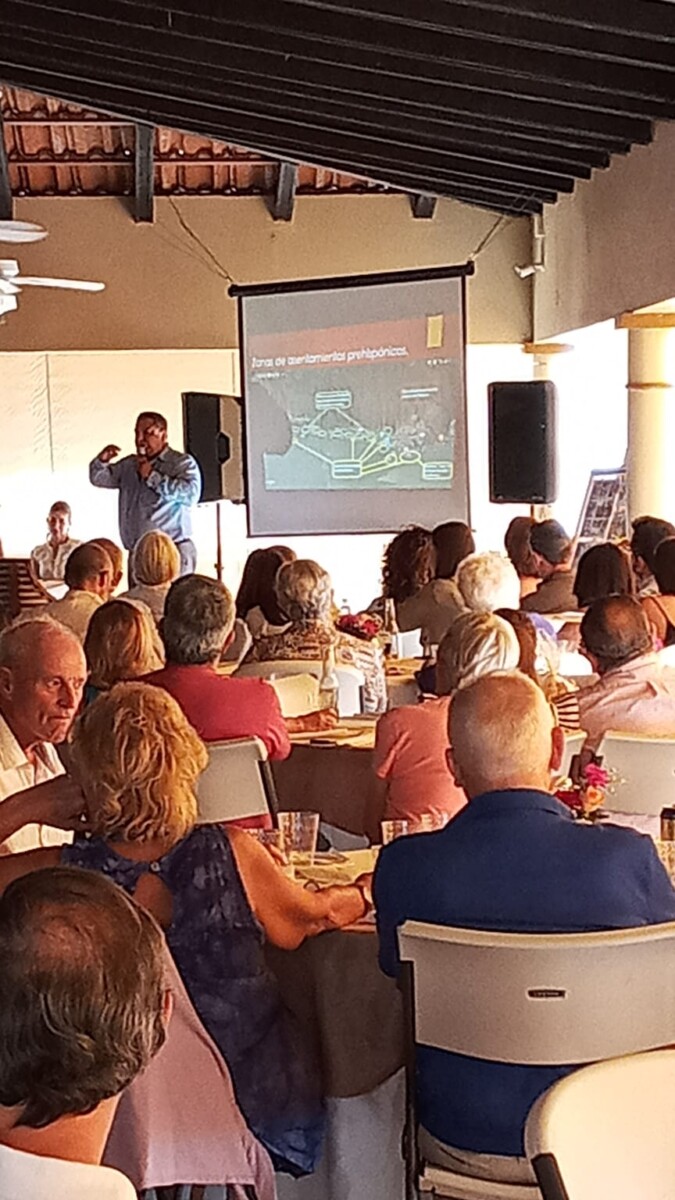
Gabriel Chávez giving a historical talk about San Juan Cosalá. Credit: Asociación Civil Pro México
María Blanco also acknowledged the work of the entire Asociación Civil Pro México team, as well as the support of the various sponsors and collaborators. The organization’s mission is to continue carrying out projects for the empowerment of local women. «We had support from the entire Asociación Civil Pro México team, but there were also sponsorships that funded a local photographer, chairs, tables, refreshments, floral arrangements, sound system, and more,» she added.
Translated by Amy Esperanto
Thanks to Federal extension of expiration dates, Jocotepec will use only valid Covid vaccines
Community Hospital of Jocotepec where vaccinations are delivered.
Héctor Ruiz Mejía (Jocotepec).-Medical authorities at the Community Hospital of Jocotepec assured the community that expired vaccines against Covid-19 will not be administered. The recent Federal extension of expiration dates for some classes of Covid-19 vaccines. makes this possible.
It was reported in several media outlets that over 59 million doses of the AstraZeneca biologic had an expiration date of April 30th. The Ministry of Health of Jalisco (SSJ) said that the Federal Government granted an «extension of useful life» for these doses, so they will be applied between May 15th and May 30th, as stated in the COFEPRIS-CAS-DEAPE-5010-2022 official communication.
The Federal Commission for the Protection against Health Risks (Cofepris) and the National Center for the Health of Children and Adolescents (CENSIA) stated these vaccines should not go to waste, so Jocotepec medical authorities will be able to use doses with the extended dates.
The authorities of the Jocotepec Community Hospital said that no expired vaccines will be administered, thanks to the extension of shelf life, and that so far this has not been a problem in the municipality.
The doctor said that only the necessary number of doses have been requested -about 1,500 doses for each vaccination day, in contrast to the 10,000 that were requested months ago. This will insure that no valid vaccine doses go to waste
Translated by Mary Woods
Schedule
Vid Wine Forum 2022
Day: May 7 and 8
16 wineries, tastings, culinary tastings, musical presentations
Venue: Chapala Yacht Club
From $540 to 1,000 pesos, children under 12 years old free of charge

Traditional Mother’s Day Festival «Adolfo Rayo»
Day: Tuesday, May 10
Cultural activity with mariachi, contests and gifts for mothers
Place: Atrium of the parish of San Francisco de Asis, Chapala
Time: 8 pm
Free
Joco Loco May Cultural Festival
Day: May 14 and 15
Cultural Festival with more than 22 musical presentations and other artists
Venue: Casa Joco – Calle el Chante #5, Jocotepec
Hours: noon – midnight
Tickets available through Facebook, Casa Joco or through email jocotepeccasa.joco@gmail.com $500 pesos each day or $800 pesos for both

JOCOFEST BIKER DAY
Day: May 15
Motorcycle event
Place: Starting at the main square of Jocotepec, continues to the lookout point and ends at the malecon
Schedule: Starting at 10 am
Course “Literature of Mexican Women Writers”
Day: April 28, May 5, 12, 19 and 26
Virtual literary course taught by Charlotte Carranza
Place: Virtual course Information: 331-273-1110
Schedule: 6 to 8 pm

Vaccination day for dogs and cats
Place: Centro de Salud Chapala, Flavio Romero de Velazco #406, Centro
Danvet Veterinary Clinic, Francisco I Madero #699, local 22, Chapala
During the next few days, the Municipal Government through its Directorate of Ecology in collaboration with the Secretary of Health Jalisco, will carry out an anti-rabies vaccination day in Chapala and its delegations
Schedule: 9 am – 3 pm
Free
1st International Theater Festival of Jocotepec 2022
Day: April 27 to May 31
Information at Casa de Cultura “José Vaca Flores”
Location: Hidalgo Sur #38, Jocotepec, downtown Telephone: 387 763 1621
Free
Translated by Mike Rogers
Praying as they walk, pilgrims ascend trail to the cross on the hill in Jocotepec
Pilgrims pray as they walk, a rosary in one hand. Photo: Hector Ruiz.
Héctor Ruiz Mejía (Jocotepec).- About 500 people, fewer than in past years, attended the traditional pilgrimage to the cross on the hill of the municipal seat of Jocotepec, on May 3.
The difficult trail ascends for more than 1.7 kilometers (about a mile) and takes an average time of one hour and 40 minutes.
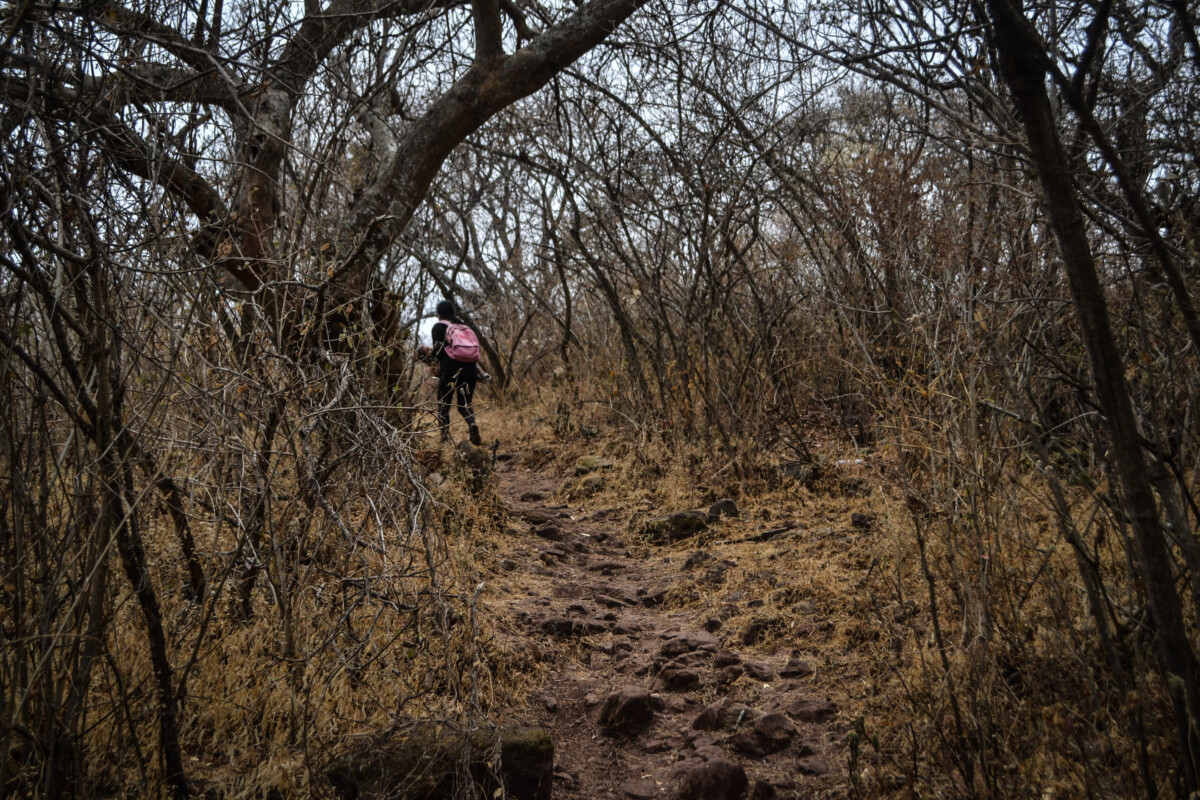
Enjoying the view from the top of the Jocotepec hill. Photo: Hector Ruiz.
Authorities from the Jocotepec Civil Protection and Fire Department, who were providing assistance for the walkers, said they counted approximately 500 people.
“In past years, we had groups of up to 100 people in a row,» one said, suggesting that the traditional event may be in decline.
As a result, the firefighters and paramedics in attendance had little to do.
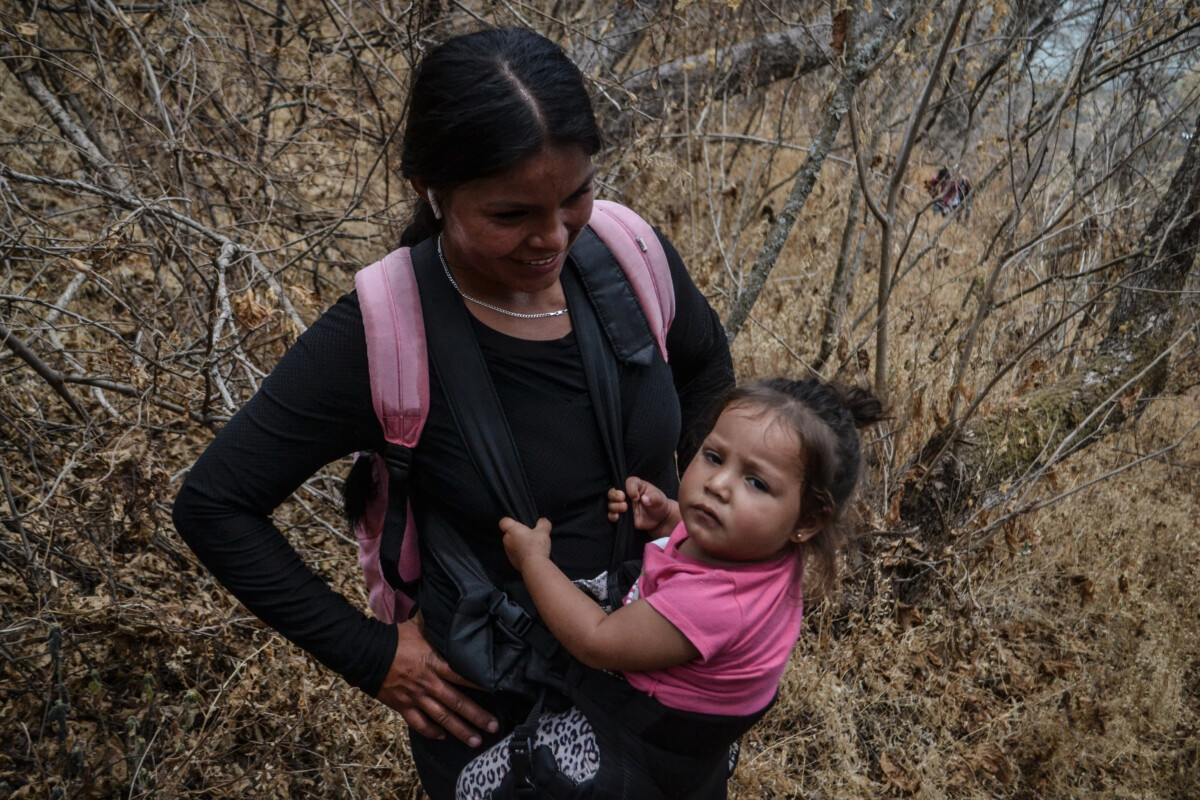
A woman climbs the hill at a rapid pace. Photo: Hector Ruiz.
Among the faithful who did take part was Gustavo, who said he had made the pilgrimage «his whole life” — asking Christ for help and thanking Him for what he has already.
“Every year I come here to pray . . . and to remember the importance of this tradition for our people,” he said.
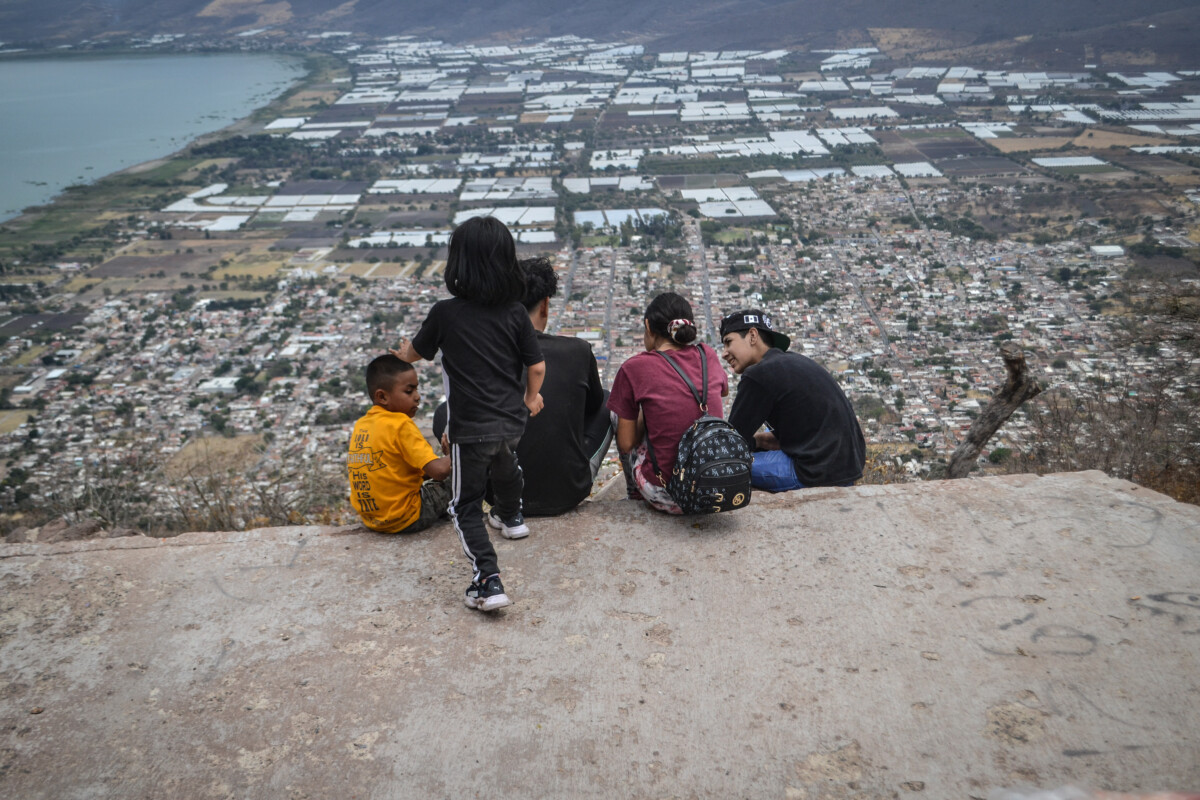
The municipal seat viewed rom the top of Jocotepec hill. Photo: Hector Ruiz.
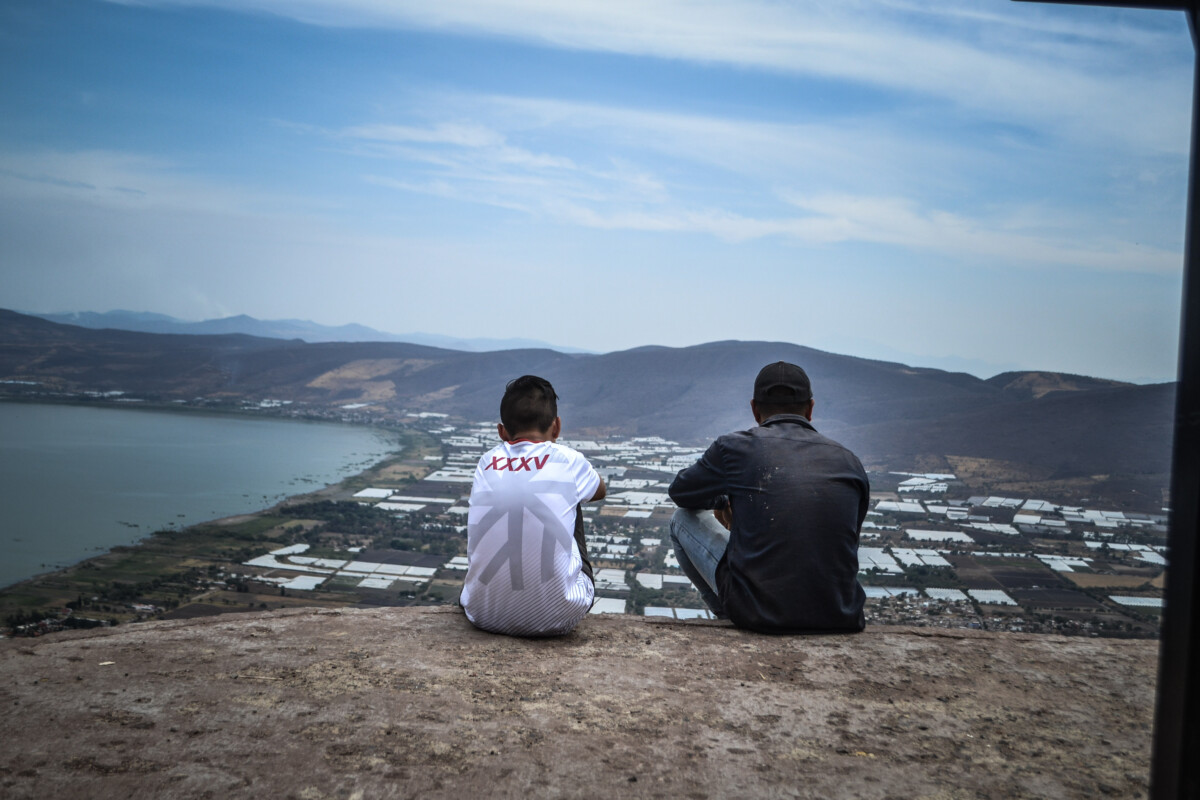
Father and son admire the view of Lake Chapala. Photo: Hector Ruiz.
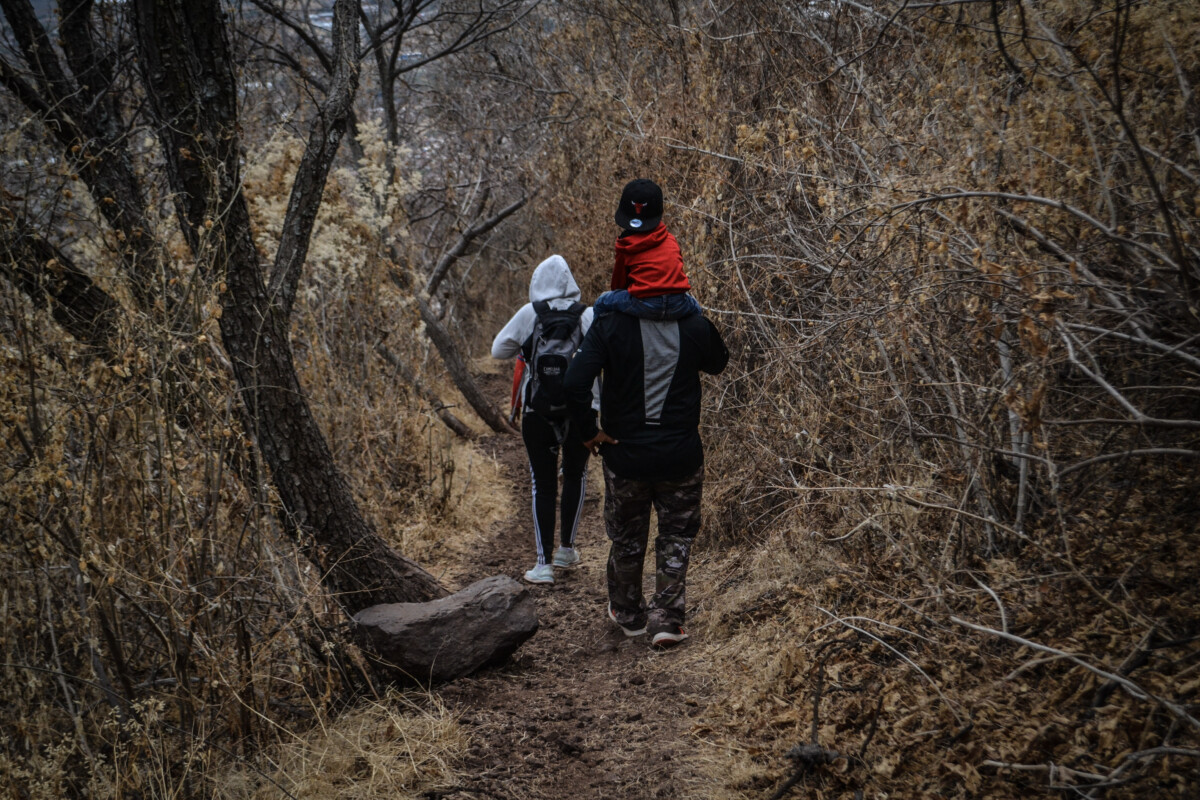
Beginning the difficult journey back, with another 1.7 kilometres to go. Photo: Hector Ruiz.
Translated by Alan Ferguson
Looking at Life in Lakeside:
By: Patrick O’Heffernan
Back in November 2021, our reporter in Jocotepec, Héctor Ruiz Mejía, wrote a story about the trash problem in San Juan Cosalá. He described garbage trucks with no gas, rats invading homes, a school with weeks’ worth of garbage stacked in front of its gates, and more.
Part of the problem is the refusal of Ixtlahuacán de los Membrillos to allow Jocotepec to continue dumping in the GEN landfill, a problem which the municipality is working on. But something else has come to my attention: the deterioration of the Carretera into the landfill that Jocotepec sorely needs.
If you drive from Ajijic to Joco and pass through the happy gauntlet of touts directing your attention to the seafood restaurants that line the lakefront, you won’t notice the piles of garbage lining the highway across from the eateries. In fact, one restaurant even has a large billboard announcing its presence astride a growing pile of garbage and debris.
Garbage, construction debris, junk, and old furniture now l fill open areas of the roadside of the Carretera practically from the county line to Jocotepec. Garbage trucks have nowhere to put what they collect . But people have to put it somewhere and the roadside is the easiest and most available place.
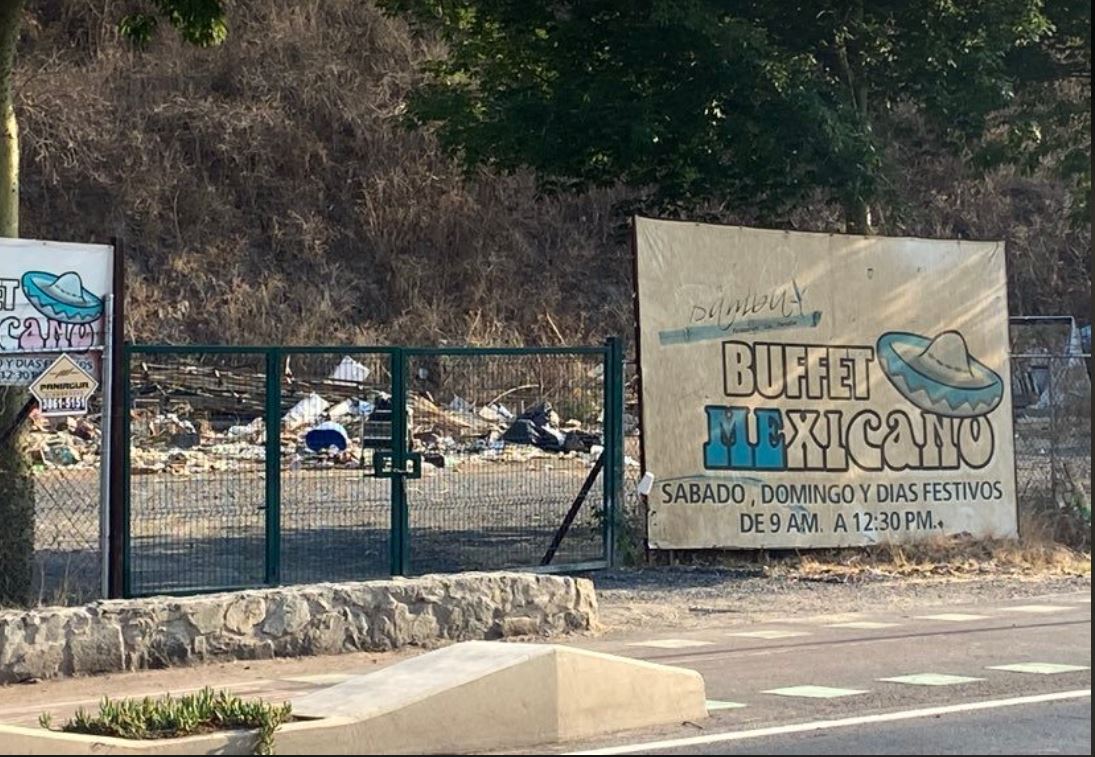
Trash on the Carretera in restaraunt row
But do you really want to take your out of town visitors to any of the great restaurants along the lake when you have to drive through a smelly field of trash? Maybe not – after all there are so many great restaurants in both Chapala and Jocotepec on clean, trash-free streets. Some even have great lake views.
To be fair, you can’t blame the Jocotepec municipality for the problem of the lack of a landfill and you have to cheer them for trying to solve it. The Carretera – Highway 23 – is Federal property; neither the state nor the municipalities have the authority nor the funds to clean it. And it is not fair to ask businesses along the Carretera to clean up the piles every day; that is what they pay taxes for. And where would they put it?
Perhaps the solution lies in the kind of collaboration and citizen action we have seen in Ajijic and Chapala. Until Jocotepec acquires a landfill, Expats and Mexican citizens and local businesses can raise funds, purchase a dedicated garbage truck, lease a piece of land, fence it and clean up the highway until Jocotepec has the funds and a landfill.
Yes, the Carretera Federal is managed by the Secretaría de Comunicaciones y Transportes, SCT) and it is the Federal government’s responsibility. But let’s face it, the garbage would completely block the highway before the SCT got around cleaning the roadside.
In Chapala, expats have purchased fire trucks for the Bomberos. Why not a garbage truck for the Jocotepec Carretera? In Ajijic, the delegado has organized citizens to fill potholes; why not similar brigadistas in Joco to load trash from the roadside into the truck and haul it to a properly fenced and managed leased site.
This is a temporary solution to be sure, but the investment and the collaboration will last a long time and give the Jocotepec government and people an opportunity to show how well they care for their community . And might even pay for itself in increased business to the lakeshore restaurants.
Escaramuza Caballito de Palo national circuit opens in Ajijic with its first event of the season
Erika Navarro and the Ajijic Potranquita team ready to perform. Photo: Patrick O’Heffernan
Patrick O’Heffernan and Sophia Medeles (Ajijic).- The Encuentro Nacional Caballito de Palo was held successfully in the Lienzo (bullring) in Ajijic last Saturday to a cheering crowd from around the country. The Encuentro is a demonstration of the skills of girls 4-11 riding stick horses in precision drills as part of training for the Escaramuza women’s event in the Charreadas, the Mexican rodeos.
No prizes were given out to the teams from different states but the head of the Ajijic team received a proposal for marriage in the Lienzo field, which she accepted, along with an engagement ring.

Drill team from San Pedro at the Ajijic Lienzo. Photo: Patrick O’Heffernan
Teams rode their “palos” – stick ponies – in “skirmishes” consisting of circling, riding to rapid stops, and executing drill team movements. Saturday’s event was a demonstration, not a competition. The teams pay a registration fee, present their routines in the skirmishes and receive a certificate of recognition and a dinner.
Erika Navarro, as a guest, with Mrs. Amparo Robledo, coaches the Ajijic team, told Laguna that this is the 7th year that the Escaramuza Caballito de Palo national circuit has been held, and Saturday’s event was the opening event of the circuit’s 2022 season.
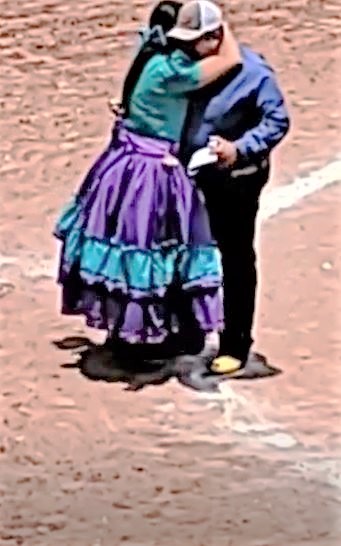
Erika Navarro hugs her now-fiancé Betoo Pérez after accepting his proposal. Photo: Patrick O’Heffernan
The Caballito de Palo girls are in training to ride the Escaramuza which consists of 8 women riding sidesaddle in full costume executing complex, military-style drills, or “skirmishes”. The sport is fast-paced and often dangerous.
Teams from 6 states attended, most bringing large, noisy cheering sections with them. Each team was dressed in their state’s traditional Caballito de Palo costume and brought their stick horses with them. The Ajijic team was dressed in turquoise and included a young boy who accompanied the girls on some of the drills and the hat dance.
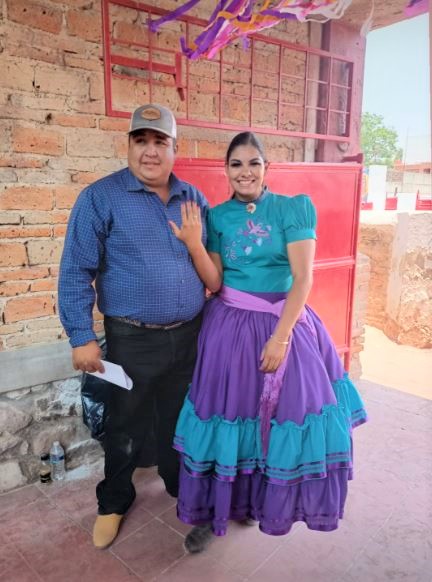
Erika Navarro and Beto Pérez show off her new engagement ring . Photo: Patrick O’Heffernan
Toward the end of the event, Ms. Navarro walked out to the field to meet one of the staff, her long-time boyfriend Beto Pérez , and was surprised when he dropped to his knees and proposed marriage. After accepting, Navarro gave her now-fiancé a big hug and turned to the cheering crowd to show off the engagement ring he had just slipped on her finger.
The Circuito Nacional De Escaramuzas Caballito de Palo »is a national organization directed by Pamela Ángeles Sáenz. Itzel González was in charge of the Ajijic event, together with the municipal government of Chapala, and the Asociación de Charros de Ajijic, which provided them with the facilities. The next event in the circuit will be in Acambay, State of Mexico, on June 16 and the Potranquitas – the Ajijic team plan to be there but needs to raise the funds for transportation. To donate contact Erika Navarro through the Potranquitos FB page at https://www.facebook.com/escaramuzacaballosdepalolaspotranquitas.ajijic
Construction work near Cerro Colorado causes uproar among Ajijic residents
Bulldozer working on the mountainside (just visible slightly above center of photo). Photo: Ajijic Citizen Observatory.
Sofía Medeles (Ajijic).- The internet has been abuzz with reports that heavy machinery has been working near the iconic Cerro Colorado mountain, west of Ajijic.
The group Ajijic Observatorio Ciudadano published reports and a photo of a bulldozer visible at the scene. In the comments section of their post the group specified that the construction site is located between Cerro Colorado and Cerro Las Tres Cañadas, or behind Cerro Colorado.
Chapala Director of Social Communication Elizabeth Oropeza Silva said the government was aware of the situation. When inspectors showed up at the site, they were shown construction licenses approved during the last administration.
«The permits granted during the past administration were reviewed and found to be in order, although there are things that appear to be out of place. We are working to review and analyze if there are any inconsistencies,» said Elizabeth Oropeza Silva.
Both on the internet and among residents, there is a lot of talk about the project. Conversations center around the identities of several presumed owners of the property, their intentions, and involvement of the Indigenous Community of Ajijic.
Two officials stated in the publication that uncovered the project that the Department of Ecology, among other agencies, is investigating the case.
Elizabeth Oropeza Silva added that they are still investigating, and that from what they have perceived, the space where they are working looks very large.
The Cerro Colorado is very dear to the people of Ajijitecos, as it is a site that is home to legends, and is part of the town’s history and popular culture. It is also recognized by visitors because of its peculiar shape, which resembles the head and wing of a bird of prey.
Residents of Ajijic interviewed by Laguna said that the hill has already been threatened by urbanization on other occasions, and is at risk of subdivision for homes as it is owned by several private individuals.
Translated by Patrick O’Heffernan
Sólo en hospitales y transporte público, será obligatorio el uso del cubrebocas en Jalisco
Jalisco es la quinta entidad del país que queda libre del uso del cubrebocas en espacios abiertos y cerrados. Las otras cuatro son Baja California, Guanajuato, Nuevo León y Guerrero. Foto: El Financiero.
Redacción.- Después de dos años del uso obligado del cubrebocas en el estado de Jalisco, la medida ya no será vigente a partir de este 10 de mayo, pero se mantendrá de manera obligatoria en hospitales y transporte público, informó el día de ayer el gobernador del Estado de Jalisco, Enrique Alfaro Ramírez.
La medida propuesta por el gobernador y aceptada por los expertos de la Mesa de Salud se da ante la baja tasa de contagios y hospitalizaciones en la entidad, sin embargo, Alfaro llamó a no bajar la guardia ante la pandemia.
Ahora, los números registran 59 casos por día en promedio, contra los 819 casos por día en los últimos dos años; actualmente existen 21 personas hospitalizadas y en abril se registraron 19 decesos, que representan el nivel más bajo por mes desde el año 2020.
“Estos indicadores nos hacen pensar que podemos dar un paso al frente, con cuidado, con conciencia de que esto no ha terminado, teniendo también presente que en otros lugares del mundo se están dando rebrotes que deben de ser motivo de alerta. Por eso, queremos comunicarles hoy a todo el pueblo de Jalisco que hemos tomado la decisión de que quede eliminada la obligatoriedad del uso de cubrebocas en nuestro Estado”, manifestó el mandatario.
La decisión también aplica para escuelas, colegios y centros de estudio, esto ante la demanda insistente de los padres de familia en esta época de calor.
“Hemos tomado la decisión en la mesa de salud que el cubrebocas sólo tendrá que usarse de manera obligatoria en el transporte público y en la infraestructura de salud de nuestro Estado, particularmente, en los hospitales. Estamos también recomendando a la gente que tenga síntomas de algún tipo de enfermedad respiratoria, que lo use, que no se descuide”.
El Gobernador llamó a la capacidad de la toma de decisiones en caso de ser necesario, pues a nivel mundial los rebrotes por Covid-19 se han presentado en distintas regiones de otros continentes.
Jalisco es la quinta Entidad del país que queda libre del uso del cubrebocas en espacios abiertos y cerrados. Las otras cuatro son Baja California, Guanajuato, Nuevo León y Guerrero.
La Mesa de Salud está integrada desde el inicio de la emergencia sanitaria por científicos, académicos y profesionales de la salud así como personal gubernamental mediante la cual se han tomado las decisiones a más de dos años de los primeros contagios en el estado.
© 2016. Todos los derechos reservados. Semanario de la Ribera de Chapala
